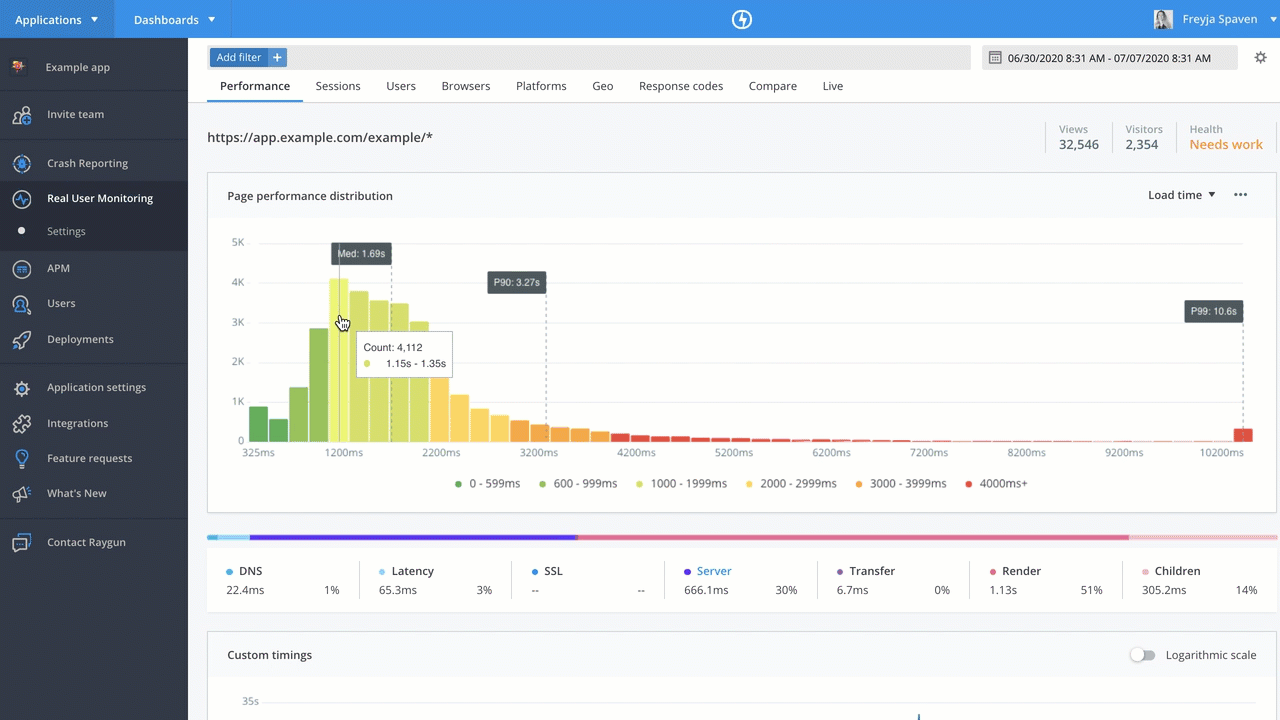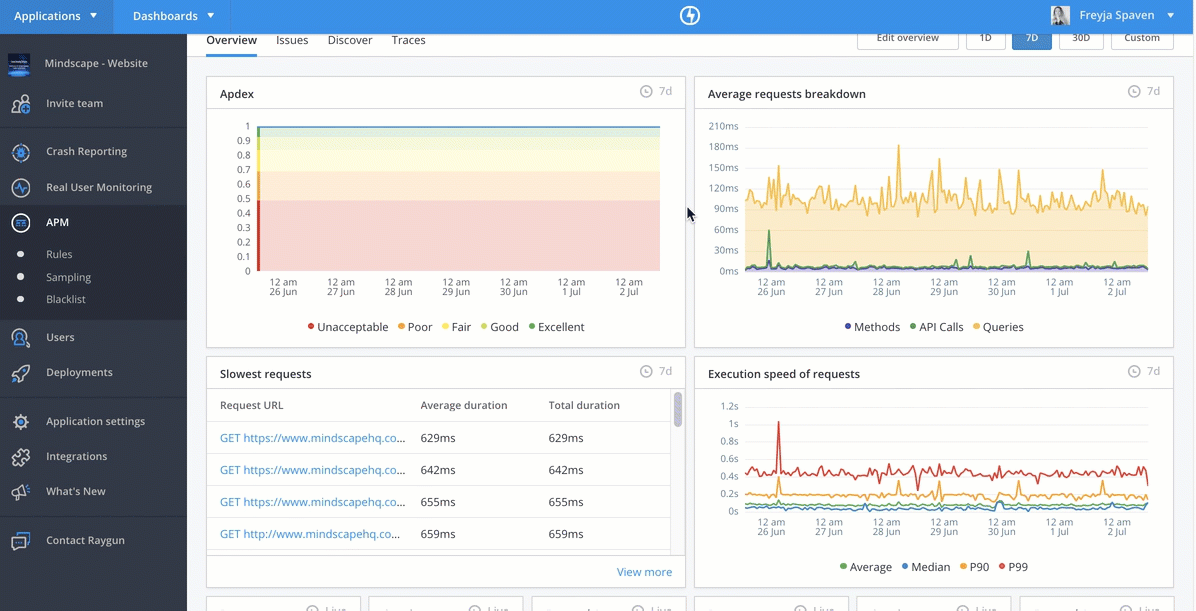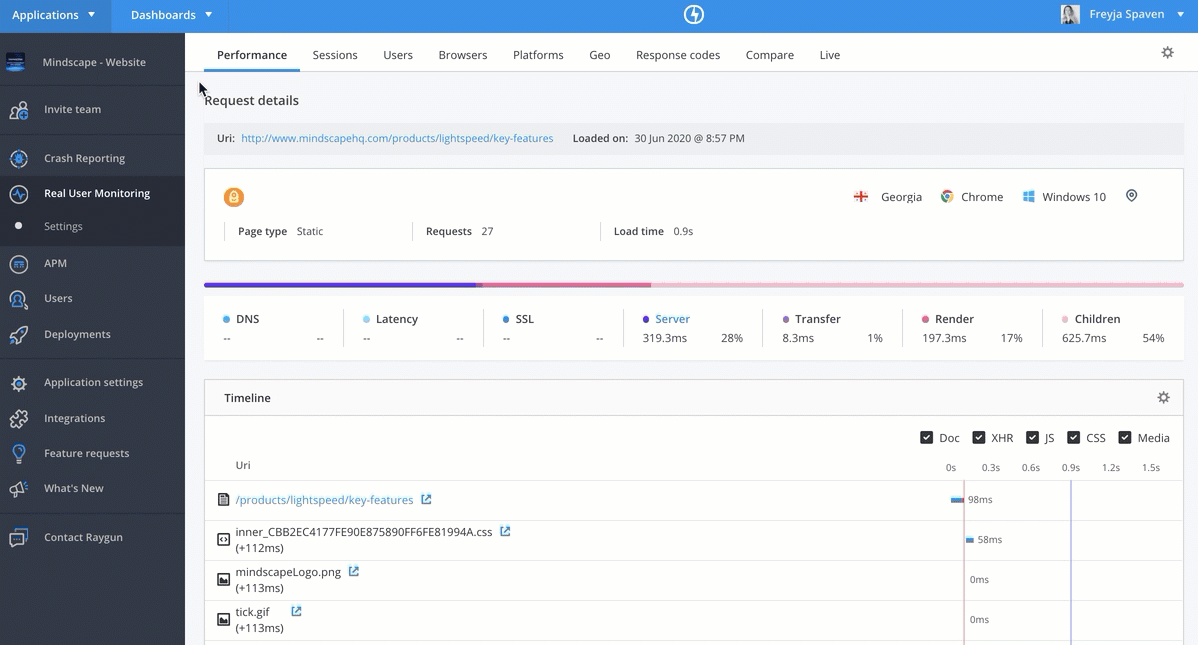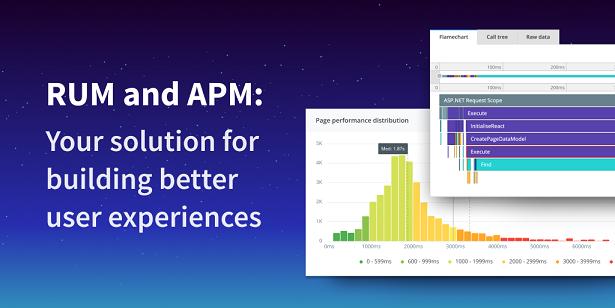RUM and APM: Your solution for building better user experiences
As modern development practices evolve at rapid rates we must stay focused on what makes for a great experience; fast, flawless software.
In the pursuit of building fast, performant software, you’ve likely come across performance monitoring products like Real User Monitoring (RUM) and Application Performance Monitoring (APM). In this article, we go deeper into how using RUM and APM can help you and your team build better software experiences.
RUM surfaces meaningful diagnostic information on front-end performance so you can ship fast, performant front-end code, and deliver the best possible user experience.

Raygun Real User Monitoring surfaces detailed performance metrics
APM monitors the performance of server-side code and offers detailed code-level insights into how to improve it, helping you to reduce infrastructure costs and to create a faster application for your users.

APM surfaces trace information in a visual and actionable way
How RUM and APM work together
With the two sides to a software application, client and server-side, there are two sides to performance monitoring. It’s crucial you’re monitoring and improving the performance of both to deliver a good user experience.
RUM and APM work together to connect the end-user experience to server-side problems, meaning you can identify the biggest opportunities to improve performance for real users.
For example, maybe a database query is really fast, but you find a particular asset is taking far too long to render. Or, everything is optimized on the front end, but the page request takes a long time on the server and you’re trying to understand why. Using a performance monitoring tool that has both RUM and APM functionality will tell you this.
Having visibility across your application front end and back end is crucial to ensuring you’re focused on the biggest opportunities to improve performance, and therefore the user experience.

The waterfall chart in RUM can be correlated with slow traces in Raygun APM for better context into performance
What can RUM and APM do for engineering teams?
RUM and APM help identify areas of the application that most need performance optimizations. As you go about making changes, these products also help to quantify the impact of those optimizations.
Inside RUM and APM you’ll find countless ways to demonstrate how your code has created faster software. Easily spot improvements in the request duration on the line graph for a particular server-side request, or see the change in a particular page performance metric over time. See the response time of a particular XHR call in a recent user session, or view the performance of a particular database query. These products have so much to offer to demonstrate the value of your changes.
These two products together help you best utilize your team to improve performance. At Raygun, many of our engineers have specialties in front-end or back-end development. When we identify opportunities to improve the performance of part of our application, RUM and APM help us determine where the biggest performance wins can come from. This way, we’re able to assign the right opportunities to the right team members, to ensure we’re delivering improvements as quickly as possible.

The Request details page in RUM provides instance-level insights into the performance of any given page load within a user session.
Our teams use RUM and APM regularly to monitor the parts of the applications they’re working on. These products help us ensure updates and improvements are performant, and spot opportunities for performance improvements.
Bringing a user-centric approach to monitoring
At Raygun, we know high performing software is crucial to a great user experience. We’re always monitoring how our users are experiencing Raygun, with both RUM and APM. Yes, it’s certainly meta, but we believe in practicing what we preach — that user-centric monitoring helps teams to deliver delightful user experiences that result in real business outcomes.
Raygun helps our team to analyze our application performance through a user-centric lens.
With RUM, we can identify the most valuable parts of the application to our customers, and understand how they are performing.
APM offers insights into the server-side performance, allowing us to uncover any bottlenecks that are causing a poor application experience. With RUM and APM together we have all the diagnostics we need across the application to make improvements that have the biggest impact on performance, and the customer experience.
If you are ready to try a Real User Monitoring, you can try Raygun RUM free for 14-days. This should give you time to see the value of RUM in your monitoring strategy. (It’s fast to set up and you will start seeing performance data immediately.)

